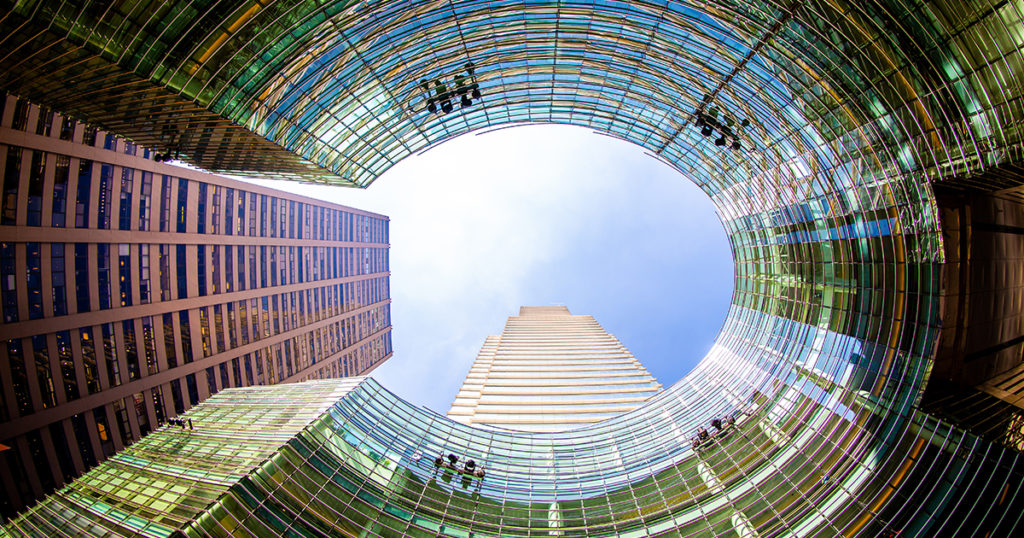
The Story of Architecture by Witold Rybczynski; Yale University Press, 360 pp., $40
The early 21st century is a time of reckoning for architecture. The field is grappling with its subservience to global capital and complicity in the agendas of autocrats like Saudi Crown Prince Mohammed bin Salman. There is broad recognition within the profession that it has long marginalized women, and a growing awareness that lionizing “star” designers obscures labor relations that verge on the exploitative. Meanwhile, interest in vernacular and non-Western design traditions has swelled in recent years, and some architects have found an urgent new mission in devoting their skills to the fight against climate change.
This existential crisis doesn’t permeate The Story of Architecture. In an initial note to his readers, Witold Rybczynski describes what to expect in the pages ahead: a history of celebrated works from the Stone Age to the present day, almost all designed by individual male architects, mainly within the Western canon. Despite the excellence of, for example, the Hausa mosques of Niger, Rybczynski writes, “I have chosen examples that best convey the principal thrust of the strain of architectural thought that has most influenced me.”
The note signals that Rybczynski knows he’s out of step with the current direction of the field, and he is. Regardless, he is one of the best general interpreters of architecture in the English language, with critical instincts honed over decades of teaching (at the University of Pennsylvania), practice (as a working architect), and writing (as the author of 21 books prior to this one). The Story of Architecture is an erudite, engaging history that teaches readers how to really look at a building and sets up a fruitful dialogue between different architects and styles. For Rybczynski, Western architectural history is one of overarching continuity. Yet evolution is constant: both accretive, incremental changes and radical moments of rupture are necessary to move forward.
He begins by setting us down in Brittany, where the Cairn of Barnenez, dating to the fifth millennium BCE, expresses the human urge to build something that is of the landscape, yet stands out from it, and lasts beyond one lifetime. We continue to King Djoser’s sprawling funerary complex in Saqqara, Egypt, where Rybczynski marks a red-letter moment: the appearance, at this third-millennium BCE site, of the classic column, with base, tapered shaft, and capital, “almost miraculously” all at once. “If this were a movie,” he writes, “it would be time for a fanfare.”
Then it’s on to Greece, Rome, and Constantinople. The buildings we visit are mostly greatest hits—the Parthenon, the Colosseum, the Hagia Sophia. Even if they seem familiar, Rybczynski excels at guiding the reader’s eye over a façade, articulating the impression it makes on us (which may be subconscious at first), and explaining how and why the architecture produces this effect. It is a shame, though, that his book lacks a glossary of architectural terms for those readers who may not know a pendentive from a pilaster.
The book steers us briskly through medieval Durham, Paris, and Venice; 15th-century Florence; back to Rome in the time of Donato Bramante and Michelangelo; and back to Paris for the flourishing of classicisme under Louis XVI. Rather than devote every chapter to a single monument or city during a certain era—which would get dull—Rybczynski switches things up, pairing works that resonate across geographies. He discusses Andrea Palladio’s Veneto villas alongside those of Hachijō Toshihito in Kyoto, and he unites Britain’s Victorian Crystal Palace with the Eiffel Tower in a chapter called “Iron Monuments.”
Despite the fast pace and occasional whiplash transitions, the reader doesn’t feel frog-marched; Rybczynski is too fluid a writer for that. Here and there, he weaves his own firsthand encounters with these masterworks into the narrative. As a young man in Paris in 1964, he recalls, he found the stone cathedral of Notre-Dame “bone-chilling,” murky despite its stained glass, and “a little scary.”
In the last part of the book, dealing with the 20th and 21st centuries, Rybczynski’s taste comes to the fore. There is so much extant architecture from the modern era—and how it will shape the buildings of the future is still so unclear—that winnowing it is necessarily more subjective. Walter Gropius and the Bauhaus, though historically important, leave the author cold; he warms instead to the Nordic modernism of Alvar Aalto, whose red-brick Säynätsalo town hall in Finland has radiating wooden trusses “as evocative as a Gothic fan vault.” Rybczynski also devotes an unusual amount of space to Bertram Goodhue’s soaring Nebraska State Capitol and to Paul Philippe Cret’s “stripped classicism,” which he describes as “colored by the architect’s rational humanism and considered reticence.” Cret, who was born in France in 1876, settled in Philadelphia and worked for three decades at the University of Pennsylvania. Unfortunately, his style was taken up by the Nazis to more sinister ends, and Rybczynski is keen to dispel any guilt by association.
The book concludes with a trio of recent buildings by Jean Nouvel, Moshe Safdie, and Allan Greenberg that Rybczynski holds up to demonstrate his precept that architecture must offer a sense of scale and order and be rooted in place, whatever its idiom. This is a tidy ending, but not an altogether satisfying one, as contemporary architecture rapidly reorients itself around the twin crises of climate change and global inequality. The 2022 Pritzker Prize went to Francis Kéré, a Burkina Faso–born architect known for designing with local materials in countries where resources are scarce. In 2021, the Pritzker went to Anne Lacaton and Jean-Philippe Vassal, French architects who specialize in social housing and whose carbon-conscious motto is: “never demolish.”
What will this mean for the larger story of architecture? It’s hard to say, but it’s a loss to the reader that Rybczynski doesn’t explore the possibilities.

